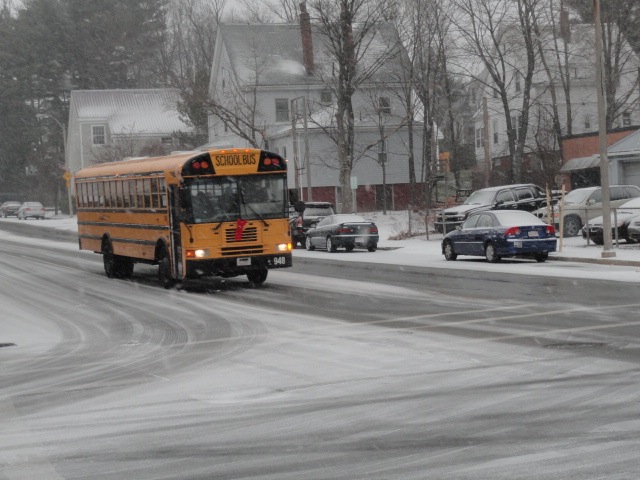
The School Committee is considering options for school busing for next Fall when the start time of the high school and middle school move later. They seek to serve as many students without increasing school bus fees or adding greatly to the budget.
The state requires students in grades K-6 living more than 2 miles from school to be bused for free by districts. Currently, Watertown buses students who live 1.5 miles or more from Hosmer School and sixth-graders living more than 2 miles from the Middle School for free. For students living closer, or seventh or eighth graders, the district offers busing for a fee of $300 (and a $475 family cap), with students living south of the Charles River going to Hosmer paying a discount rate of $200 (family cap of $320).
Assistant Superintendent for Finance and Operations Mary DeLai told the School Committee last week that the fees cover about 18 percent of the total cost of busing – $206,280 this year – and provides three buses that are able to serve both Hosmer and the Middle School.
Next year, however the start times of the middle school and elementary schools is only five minutes apart. Superintendent Dede Galdston said moving the start time for the middle and high schools later was done after years of study that found that teens learn better if they wake up later and has other health and safety benefits.
The change in starting times means running the same busing system would not work, DeLai said.
“If we were to have gone with busing as usual would have meant going from three buses to six buses, because the proximity of start times are such that we would not he able to have done tiering anymore, certainly not in the morning,” DeLai said. “If we did it in the afternoon, middle school students would have to wait 15-20 minutes for the bus after school. We would need adult supervision for that time.”
Having six buses would require increasing the budget for busing to $168,555 and if the fees were to still cover 18 percent the cost of busing it would mean increasing it to $650.
“I think there is a perception out there that if we just add $25 or $50 to the fee we would be able to offset the amount, but we are subsidizing to such a significant amount that to truly offset that amount would have required more than that type of fee increase,” DeLai said.
An option that could keep busing costs more even and not require a fee increase is to have three buses – two for Hosmer and one for the middle school. Not all the students taking the bus now would be able to ride it with this model, DeLai said, with those living less than a mile from school no longer being able to ride.
DeLai also looked at an option with four buses – two for the Hosmer and two for the middle school – but that would increase the school bus budget by $49,815. For fees to cover that amount would mean doubling the bus fees to $600, she said.
The School Committee was due to vote on their preferred option at last week’s meeting, but they voted to delay the decision until the April 2 meeting. Galdston said she does not think two weeks would greatly impact negotiating a school bus contract for next year and she recommended the School Committee delay so that it could be discussed more by the Budget and Finance Subcommittee.
School Committee Vice Chair Kendra Foley said the district has been busing more students for free than the state requires, and students who live closer than 2 miles can ride for a fee. She noted that other things would have to be worked out, such as adding more crossing guard because more students would be walking. Also, they would have to make sure there are safe walking routes to school.
The option of four buses adds nearly $50,000 to the budget, which School Committee member Eileen Hsu-Balzer said sounds like only a little amount in a multi-million dollar budge, but she said it would mean losing other things.
“At the budget presentation we heard that after doing all the things we have to do just to replicate the services (offered by the schools) that we have now, that there’s $373,000 left for anything new,” Hsu-Balzer said. “That means literacy, that means purchase of materials, additional staff, all has to come out of the same $373,000. In that context $49,000 is a lot of money.
“That’s the problem. Everyone wants to do something that works for the kids and the families, but it really is a matter of fitting all the pieces together.”